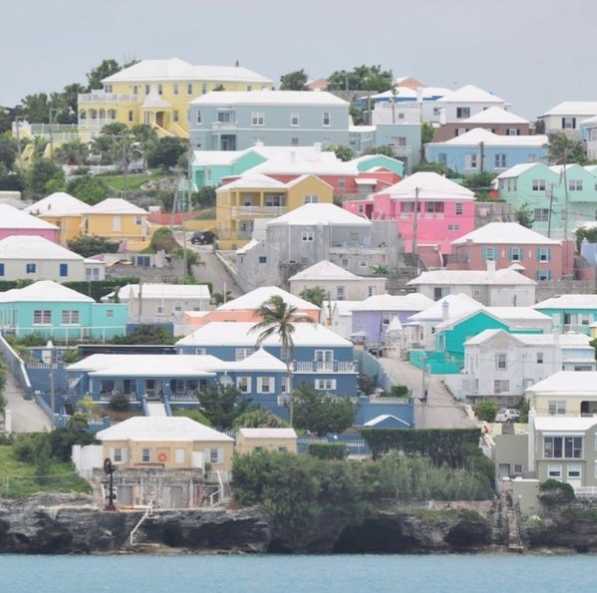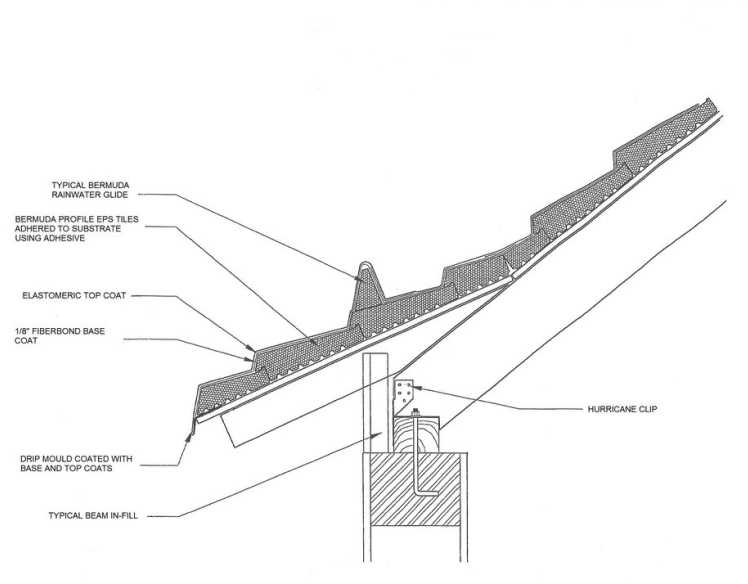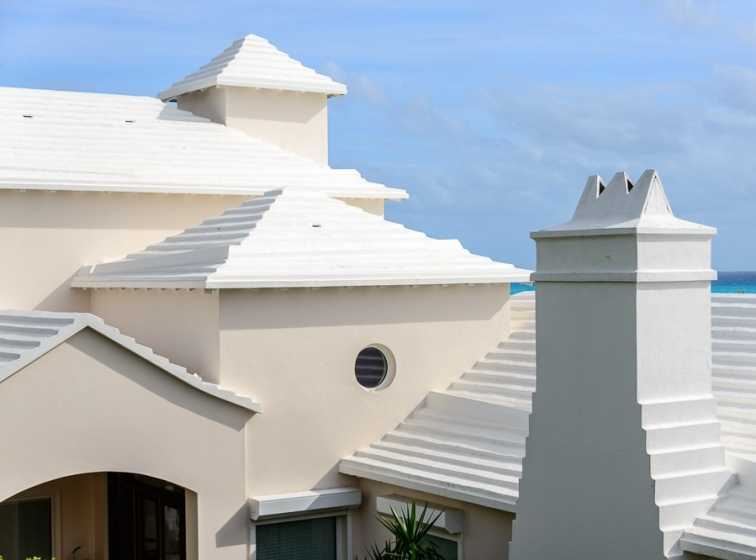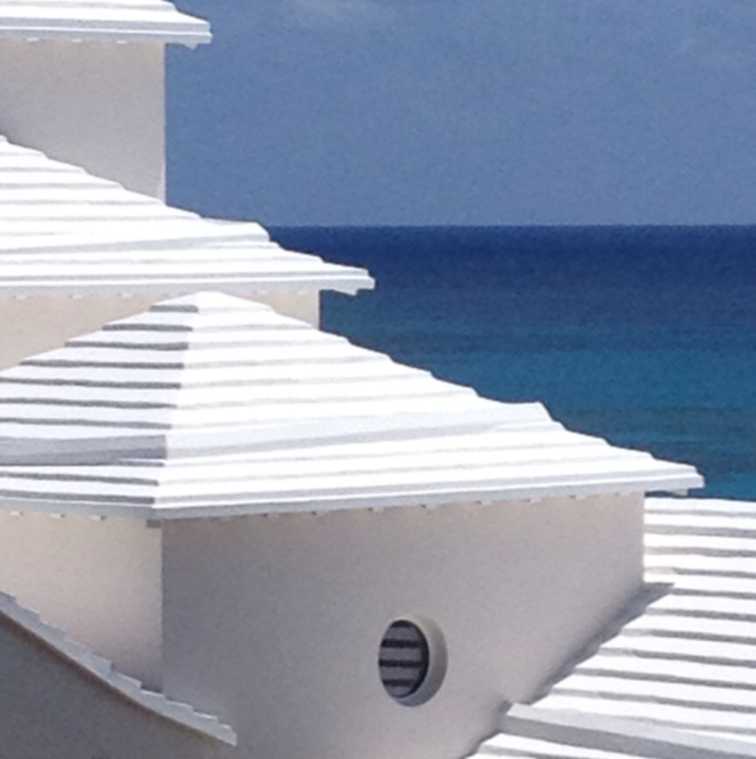
There is plenty of water in Bermuda for yachting purposes and which was very agreeable for Team New Zealand when they took out the America’s Cup during June of last year but the North Atlantic island has no fresh-water springs, rivers or lakes and therefore a chronic shortage of potable water.

Many of the island's sixty thousand residents live in limestone houses painted in pastel colours with white stepped roofs. The roof steps are designed to slow down heavy rainfall thereby helping spouting deal with the rain and store it in tanks under each house.
Each house must be self-sufficient in water which is just as well because there is no mains water supply for domestic households (and no water bills).
Bermuda’s house building regulations require that for each square foot of roof area, houses must have at least thirty litres of water tank capacity and that each house must be capable of capturing 80% of rain which falls on the roof. The roofs tend to be white because white more efficiently reflects ultra-violet light generated by the sun and also helps to purify rain water.

Image via Innovative Building Systems (Bahamas) Ltd
Increasingly the island’s commercial sector relies on desalination plants of which there are now six spread across Bermuda and which have an overall generating capacity of 13,500 cubic metres per day.
Something similar to Bermuda’s domestic water system may be a sensible and cost saving scheme suitable for many parts of New Zealand and Australia.

